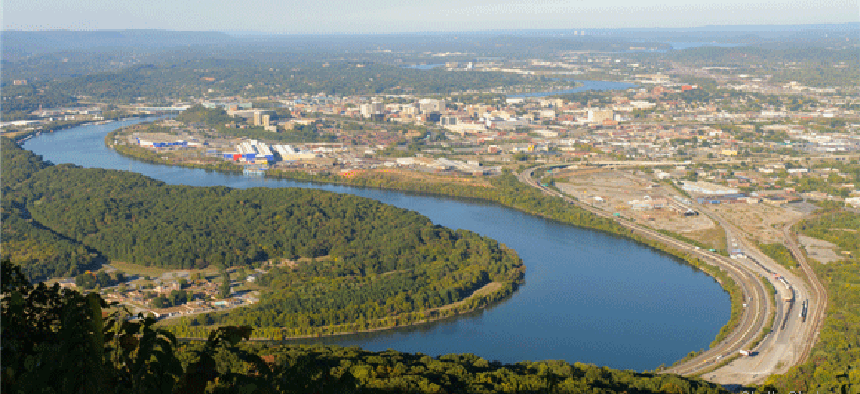Chattanooga tests ultra-fast system for disaster response

NSF funds a project using the city's gigabit network to get real-time information to emergency crews.
Researchers at the University of Tennessee at Chattanooga are using ultra-fast, high bandwidth technology to design a computer-based disaster mitigation system aimed at helping emergency workers, local officials and the public determine how to predict and respond to disasters.
The pilot project runs computerized disaster scenarios using a model with a detailed layout of Chattanooga, including streets and buildings, to study what could happen if a hazardous material were released, for example. The goal of the project is to train emergency workers in advance of a disastrous event and deliver real-time information to workers and the public while the event actually is under way.
Chattanooga is an ideal city to test such a response system, since it has the largest community-wide gigabit-capable network in the country and an infrastructure able to maintain the communications and asset management needed for disaster mitigation.
The network can support high-performance tools and complex computational models that allow the researchers "to run accurate scenarios on the computer of how a disaster might unfold, so you can identify weaknesses," Henry McDonald, chair of excellence in computational engineering at the university, said in a release from the National Science Foundation, which is funding the project.
Additionally, the researchers currently are installing a small number of sensors that will link to the network, and be able to detect potential hazards.
Even during an emergency, "quite a bit of the infrastructure will survive," McDonald said, because the state-of-the-art fiber network has proved very resilient. "The fiber is either on top of utility poles or underground. It comes up out of the ground, up the pole and into a portal. Police cars and fire engines hook into that portal via Wi-Fi and get onto the network that way. There is a lot of communication ability we have now that we didn't have before, a lot of computing horsepower that we never had before."
NSF is funding the new disaster mitigation system research through its EArly-concept Grants for Exploratory Research (EAGER) program.
Although the pilot project for the system is set in Chattanooga, McDonald said he expects every city in the United States to benefit. "You need big computers, but you can access the cloud and access large systems over high-speed bandwidth," he said. "If it works in Chattanooga, it can work anywhere."
NEXT STORY: 911 texting moves to real world






